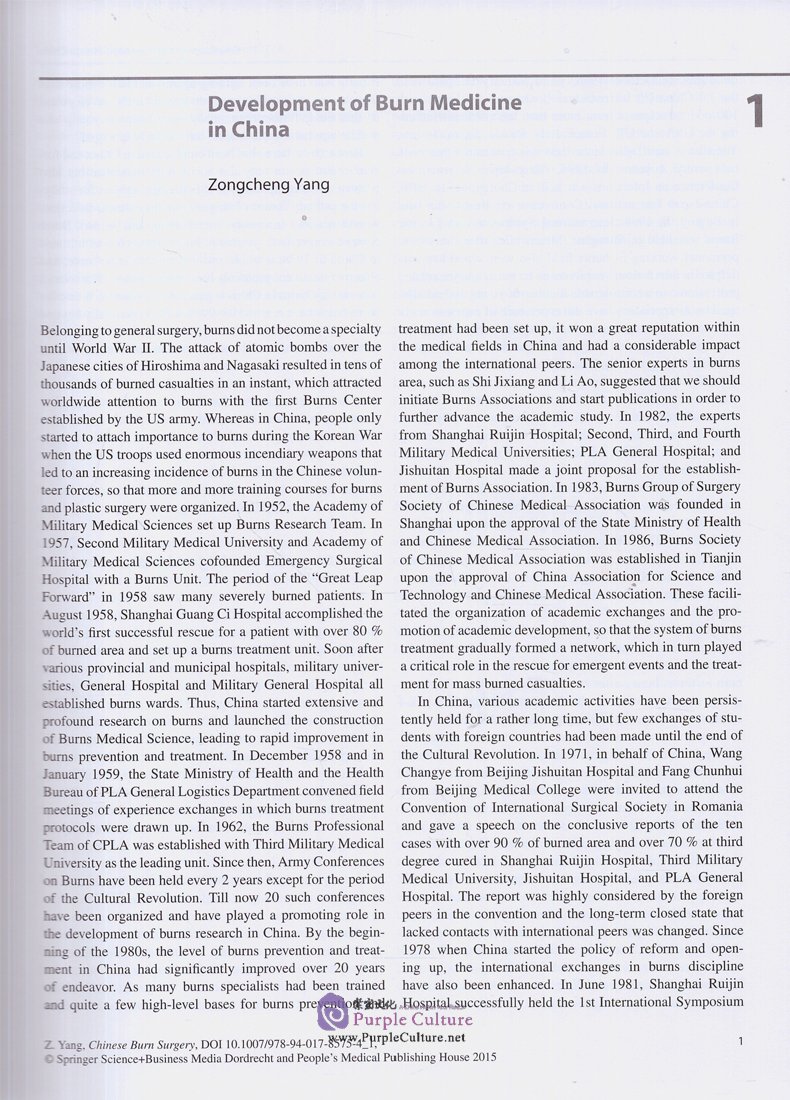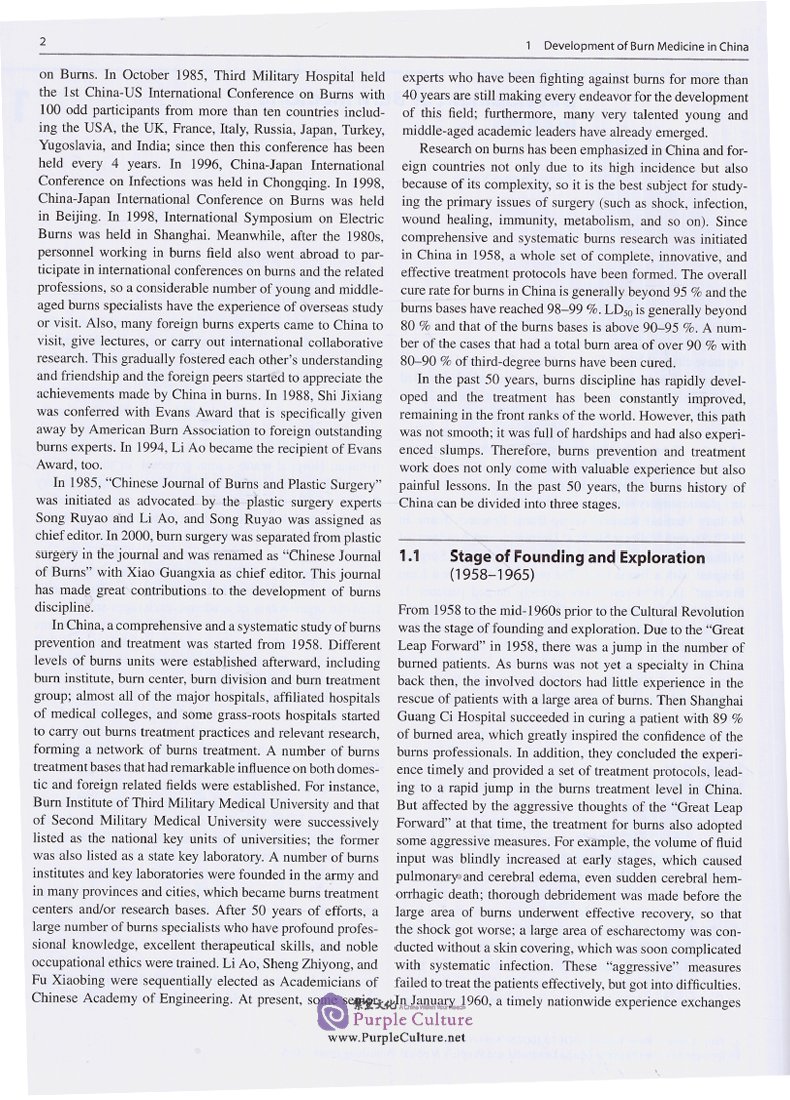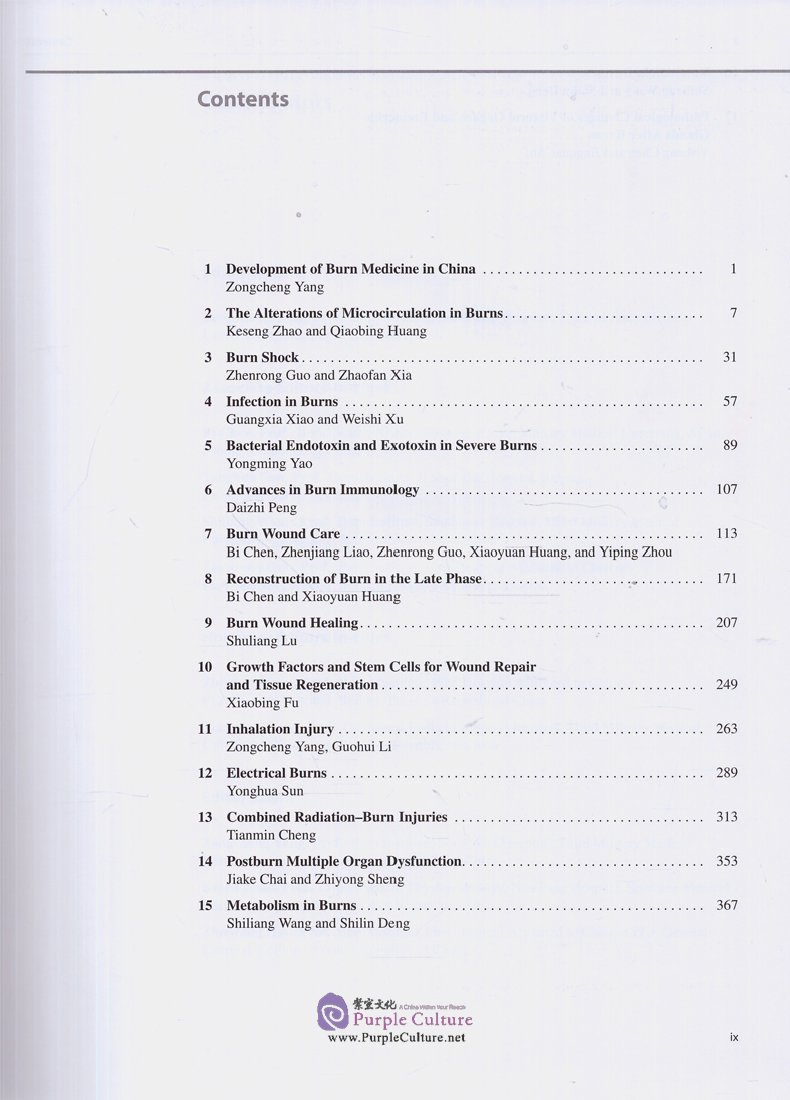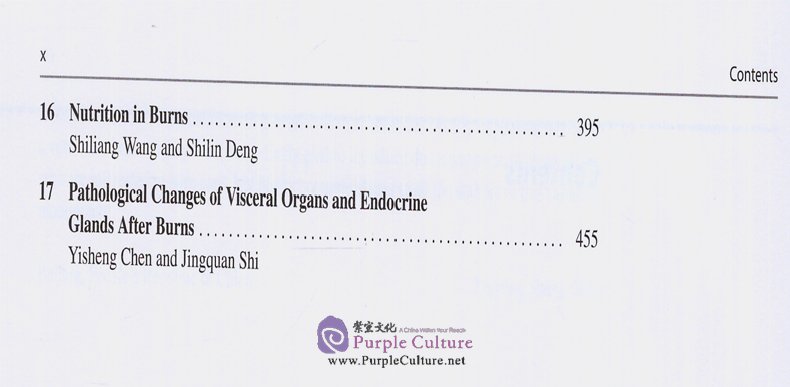Sample Pages Preview


Although the application of hypertonic saline formula can decrease the amount of infusion and reduce edema, the conditions of the patients should be monitored closely and the serum sodium should not exceed 160 mmol/L.Moreover, the blood osmotic concentration should also be monitored and it should not be >330 mmoUL to prevent hyperosmotic anhydration and even coma.
The infusion formulas applied in China draw on the experience of the Evans formula and continue to study the fluid infusion for resuscitation during the shock phase.According to the actual measurements of different populations, Chinese specialists in burns proposed two simple methods of calculating body surface area, the "modified rule of Nine" and the "rule of palm," which provide convenient methods for the calculation of fluid infusion during the shock phase.The "current formula," generally accepted by Chinese specialists, was proposed in 1970(11).The formula requests the amounts of electrolytes and colloid to be 1.5 mLKg—l per 1% TBSA plus 2,000 ml of water (5% glucose) in 24 h, and the ratio of crystalloid and colloid is 2:1 or 1:1 (third degree, large burn surface area).Each component should be infused alternately to prevent an imbalance of fluid infusion and severe edema.



